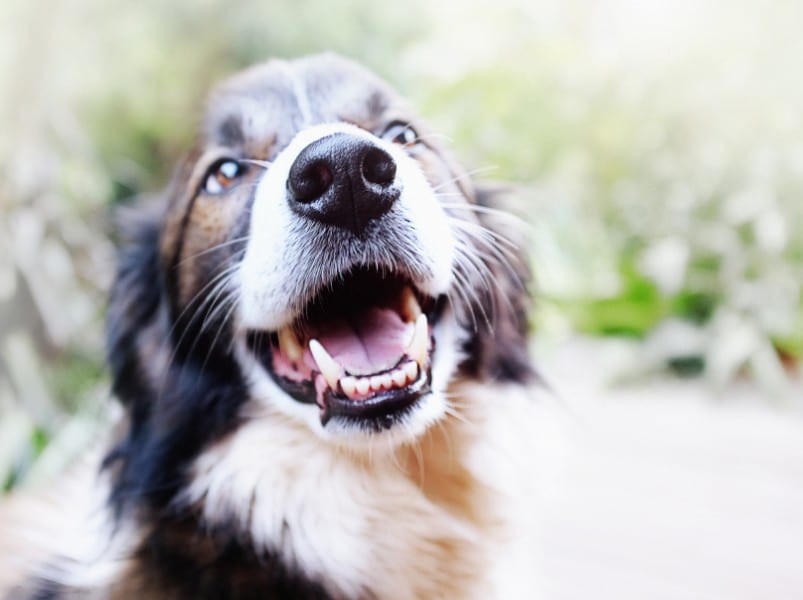The Real Deal About Periodontal Disease in Pets

Your pet may not need to be camera ready all the time, but their “smile” does matter. What starts as a little bad breath and tartar buildup can quickly progress to full blown periodontal disease, if left untreated.
Periodontal disease is defined as the progressive inflammation of the supporting structures of the tooth. It happens when gingivitis – inflammation of the gums – combines with inflammation of the tooth root and bone to result in periodontitis.
Periodontitis is the most common cause of tooth loss in pets, affecting over 85% of pets by the age of 4. Schertz Animal Hospital looks at causes of periodontal disease and how to treat and prevent it in your pets.
Periodontal Disease in Pets
- Periodontitis starts when bacteria and food particles combine to form plaque on the teeth.
- Minerals in the pet’s saliva bond with the plaque, and it hardens into tartar within a few days.
- The bacteria then work their way under the gumline, causing inflammation and gingivitis.
- Once under the gums, the bacteria erode the supporting structures of the teeth, resulting in tooth loss.
The bacteria associated with periodontal disease doesn’t just stay in your pet’s mouth, though. it is swallowed and travels to the internal organs, causing problems with the liver, heart, and kidneys. in humans, studies show that periodontal disease leads to shorter lifespans, and there is some evidence that this is true for pets, as well.
Your veterinarian can observe certain signs of periodontal disease, such as gingivitis, with a thorough dental exam. but because most of periodontitis occurs below the gumline, anesthesia is needed to fully assess your pet’s dental health.
You may also observe early signs of periodontitis, such as bleeding gums, drooling, pawing at the mouth, bad breath, and difficulty eating (which may manifest as messy eating).
Periodontitis Treatment
Early periodontitis can be treated with a thorough dental cleaning above and below the gumline as well as polishing any ridges that collect plaque and tartar.
Any loss of the supporting structures of the teeth however is a process that cannot be reversed and will need intervention in one or more of the following ways :
- root canal
- planing
- crown restoration
- extraction
Prevention of Periodontal Disease in Pets
Luckily, we have many preventive approaches to address periodontitis.
Daily tooth brushing at home is a wonderful way to prevent plaque and tartar buildup. a finger brush or small pet toothbrush are very handy tools for this, as is pet toothpaste. Human toothpaste may contain ingredients that can be toxic to pets, and can upset their stomach if swallowed.
Mouth rinses, dental chews, and dental diets may also be recommended to help with removal of plaque and tartar through the abrasive action of chewing. They may also contain enzymes to prevent plaque from accumulating. These products can’t substitute for brushing, though.
Routine dental cleanings are recommended for most pets, and the frequency will depend upon your pet’s overall dental health and the degree of dental disease we see. This preventive care allows us to examine every tooth in detail and ensure that we can treat small problems before they become advanced disease.
Weighing The Benefits
Many owners are concerned about anesthetic safety and the risks associated with dental cleanings under anesthesia. Although there is always a risk, modern veterinary medicine has made anesthesia safer than ever, with advanced patient monitoring protocols, safer anesthetics, and human-grade equipment. Our veterinary technicians take your pet’s safety and comfort seriously.
Anesthesia free dental cleanings are ineffective since animals don’t generally cooperate with having the tooth structures examined and their gum line cleaned. Without addressing periodontal disease below the gums, the bacteria and tartar that continue to cause disease and discomfort are left to do damage, even after the “cleaning”.
If you have any questions about periodontal disease in pets, or would like more information, please contact us. We’re here to help give your pet a lifetime of good oral health.
Share This Article
About
Schertz Animal Hospital
Since 1976, Schertz Animal Hospital has offered the greater San Antonio area outstanding pet care. Our state-of-the-art animal hospital in Schertz, TX compliments our stress-free handling and experienced veterinary staff. Make an appointment online or give us a call at (210) 659-0345 today!
